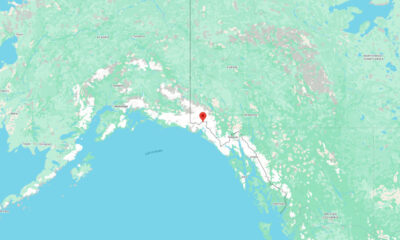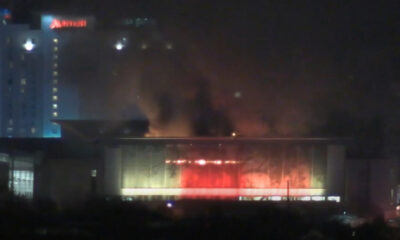Reviews
How to Protect Employees and Visitors from Slip-and-Fall Risks

Slip-and-fall accidents can be viewed as mere tumbles; however, the truth is far more dangerous. Based on the recent statistics, slip, trip, and fall accidents constitute approximately 18 per cent of all non-fatal injuries in the workplace and claim hundreds of lives annually.
As a business owner, facility manager, or safety lead, you will be aware that this is a two-fold responsibility: protecting people is a moral obligation, and minimizing risk is a bottom-line for your organization.
The legal and financial implications of Slip-and-Fall Hazards
Bruises and time off are not the only outcomes when an employee or visitor falls due to a wet floor, a bunched-up mat, or a dark staircase. This may be followed by lawsuits, increased insurance premiums, workers’ compensation claims, and damage to reputation.
For example, managing serious premises-liability exposures requires a similar risk-management approach to that required when companies counsel on complex events like those covered by an Orlando truck accident lawyer.
Falls in the workplace cost companies billions of dollars each year. It implies that the cost of inaction is significantly greater than the cost of action.
Determining Slip-and-Fall Hazards: Employees vs Visitors
It is easy to concentrate on employees, but visitors can be in more trouble simply because they are unfamiliar with your surroundings. You need to consider both groups.
- Hazards within the home: Wet or polished floors, loose rugs or floor mats, cluttered floors, dim lighting, or unanticipated steps.
- Outdoor/entry risks: cracked/uneven pavement, slippery/icy ramps, wet entranceways, poor landscaping or drainage.
As you take a stroll through the building like a visitor to the house for the first time, you will be able to see items that the staff might not be able to notice.
Engineering & Administrative Controls to Prevent Slip-and-Fall Risks
Two control camps exist: the engineering (physical changes) and the administrative (policies, training, processes). Both must work together.
Engineering controls
- Use non-slip or covered flooring in areas prone to dampness or near doors.
- Ensure it has adequate lighting, particularly in stairwells, corridors, and outdoor walkways.
- Level patches of rough floors, flatten carpets under the door, keep drainage, and prevent water infiltration.
- Install handrails, ramps instead of high steps, and physical differences to level changes.
Administrative controls
- Develop a spill/maintenance policy: in the event of a spill, there should be a designated person responsible for cleaning it up as soon as it occurs and for posting a temporary warning.
- Food cleaning: clean walkways, cables, and boxes; automatically inspect at-risk areas.
- Train workers to handle dangerous situations and take action; they should be confident they can stop a process when something is hazardous.
Developing a Safety-First Culture: Involving the Employees and Visitors
Most controls are useless without regard for individuals. Prevention is sustainable due to the culture of safety. Inspire employees to report hazards, reward positive behaviors, and display signs that demonstrate your company’s commitment to safety, not just a legal requirement.
Visitors also feel safe when the environment is friendly and secure. When a visitor walks around your premises without falling or stumbling, there is a low chance of associating danger with your establishment. Welcome guests without making them apprehensive.
Responding Swiftly When an Incident Occurs
No matter how hard one tries, accidents can still occur. The point is that one has to respond promptly and carefully.
- Give first aid and medical assessment when necessary.
- Record the situation, including photographs, eyewitness testimonies, and details about time/weather/floor condition.
Conclusion
Ensuring that the employees and visitors are guarded against slipping and falling incidents is not a matter of choice. It is all about taking care of people, saving face, and avoiding expensive upheavals. Take action now: identify one risky area, such as the main entrance or a wet area, and implement one engineering control and one administrative control.

-

 Health6 days ago
Health6 days agoFrance confirms 2 MERS coronavirus cases in returning travelers
-

 Health1 week ago
Health1 week ago8 kittens die of H5N1 bird flu in the Netherlands
-

 Entertainment6 days ago
Entertainment6 days agoJoey Valence & Brae criticize DHS over unauthorized use of their music
-

 US News3 days ago
US News3 days agoMagnitude 7.0 earthquake strikes near Alaska–Canada border
-

 Legal1 week ago
Legal1 week ago15 people shot, 4 killed, at birthday party in Stockton, California
-

 US News1 week ago
US News1 week agoFire breaks out at Raleigh Convention Center in North Carolina
-

 Legal5 days ago
Legal5 days agoWoman detained after firing gun outside Los Angeles County Museum of Art
-

 Health1 week ago
Health1 week agoEthiopia reports new case in Marburg virus outbreak




